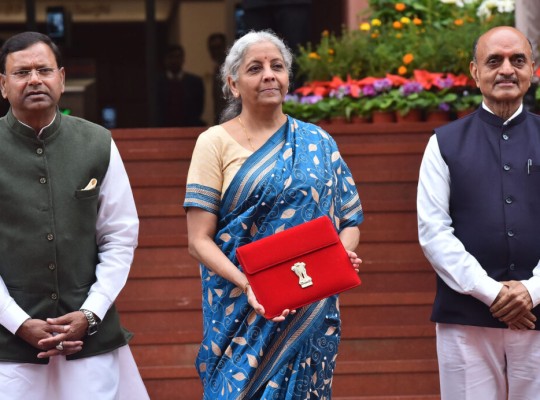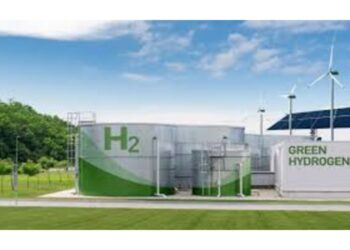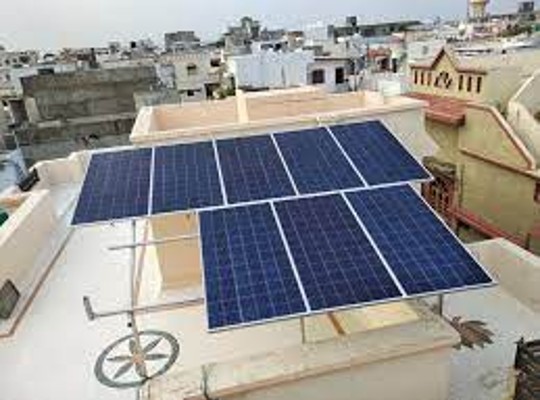Rooftop solarization will reduce electricity bills for residential consumers while offering additional income from surplus electricity generation. The scheme also expands the market for PV installers and PV component manufacturers.
“Through rooftop solarization, one crore (10 million0 households will be enabled to obtain up to 300 units [kWh] free electricity every month. The scheme will save up to INR 15,000-18,000 annually for households from free solar electricity and selling the surplus to the distribution companies,” said finance minister Nirmala Sitharaman.
Rooftop solarization will open entrepreneurship opportunities for a large number of vendors in supply and installation; and employment opportunities for the youth with technical skills in manufacturing, installation and maintenance.
Neeraj Kuldeep, Senior Programme Lead, Council on Energy, Environment and Water (CEEW), and Gagan Sidhu, Director – CEEW Centre for Energy Finance (CEEW-CEF), said, “An analysis by the Council on Energy, Environment and Water (CEEW) suggests that 20-25 GW of rooftop solar capacity would be supported through solarisation of one crore households. Further, given that residential consumers receive subsidized electricity from discoms, solarisation of the demand from these households will save about INR 2 lakh crore for discoms over the next 25 years (the solar plant’s life).”
“All states can leverage this opportunity as rooftop solar potential exists everywhere, unlike utility-scale solar, which is primarily restricted to seven RE-rich states. CEEW analysis has already established the 637 GW of technical potential in India for rooftop solar.”
Ishver Dholakiya, founder and managing director, Goldi Solar, said the promotion of residential rooftop solarization will catalyze new opportunities in the growing solar sector. He anticipates major announcements, especially in areas like manufacturing, imports, and technological advancements, when the full budget is presented in July following the elections.
Subrahmanyam Pulipaka, CEO of industry body National Solar Energy Federation of India (NSEFI), said, “India’s ground-based, grid-connected solar proliferation story is an inspiration for developed and developing countries. Through the Suryoday Yojana [for residential rooftops] a clear message has been sent that India is serious about not just growth but spread. Every citizen of the country will be an integral part of India’s fight against climate change while saving up to 18 thousand rupees on electricity bills.”
The finance minister also announced viability gap funding for offshore wind energy projects for an initial capacity of one giga-watt. Coal gasification and liquefaction capacity of 100 MT will be set up by 2030. This will help in reducing imports of natural gas, methanol, and ammonia. Also, blending of compressed biogas (CBG) in compressed natural gas (CNG) for transport and piped natural gas (PNG) for domestic purposes will be mandated in a phased manner.
The viability gap funding for offshore wind will support the expansion of the wind power capacity. As per CEEW’s analysis, while 65% of the $10 trillion of investments required for India to achieve net-zero by 2070 can be mobilized from conventional sources, the balance 35% will need interventions. “Further, wind as a generation source is also critical for our nearer-term energy ambitions. In fact, per the Central Electricity Authority’s own assessment, wind capacity would have to grow 1.9x from its current 44.7 GW to 100 GW by 2030 to meet the expected increase in power demand in the country by then,” said Sidhu.
Girishkumar Kadam, senior vice president & group head – Corporate Ratings, ICRA Ltd, said, “The VGF scheme for offshore wind energy will improve its cost competitiveness, and further aid the renewable capacity addition in the long run. Further, measures for the promotion of roof-top solar remain positive for the renewable sector.”
Amit Jain, CEO and country manager India, ENGIE, said, “The introduction of viability gap funding for harnessing offshore wind energy potential, with an initial capacity of 1 GW, aligns with the expectations of the renewable energy sector and contributes to the overall vision of sustainable growth. The budget now presents the roadmap to explore the wind energy beyond the coastline.”
Sharad Pungalia, managing director and CEO, Amplus Solar, said, “The initiatives aimed at promoting rooftop solarization signal a strategic framework to leverage India’s substantial residential market for renewable energy adoption. Additionally, the provision of viability gap funding for offshore wind energy projects, with a focus on capacities up to 1 GW, addresses a critical need in propelling the growth of offshore wind energy which had gone on a flat trajectory in the last few years.”
“While the demand market has been incentivized,” Pungalia said, “relaxations in import taxes would have parallelly helped the generators achieve the targets associated with the rise in energy demand till local manufacturing stabilizes.”
Among other budget highlights, the government will support EV manufacturing and charging infrastructure and introduce the payment security mechanism for greater adoption of e-buses for public transport networks. A corpus of INR 100,000 crore will be established with fifty-year interest-free loan to encourage the private sector to scale up research and innovation significantly in sunrise domains. The corpus will provide long-term financing or refinancing with long tenors and low or nil interest rates.
“The push for an EV ecosystem creation and the large-scale roll-out of e-buses through payment security mechanisms will decarbonize the mobility sector while propelling India as a potential EV manufacturing hub. The announcement of the INR 1 lakh crore corpus is a remarkable step to attract private investment in innovation, research and development in the clean energy sector,” said Saurabh Kumar, vice president – India, Global Energy Alliance for People and Planet (GEAPP).
Nitin Gupta, co-founder and CEO of Attero Recycling, said, “The government’s focus on strengthening EV manufacturing and charging infrastructure in the interim budget is a positive signal towards sustainable mobility. With such initiatives, the government is laying a strong foundation for a greener and more resilient transportation sector. The push for e-buses adoption backed by a payment security mechanism will help in accelerating the transition to cleaner and more sustainable public transportation systems. The rooftop solarization scheme, enabling one crore households to receive up to 300 units of free electricity every month, marks a crucial step towards the adoption of renewable energy.”
“This transition necessitates the use of lithium-ion battery packs for energy storage, indirectly promoting technological innovation and sustainability in the energy sector. Such initiatives align with global efforts to combat climate change and promote a greener, more sustainable future. While we hoped for provisions addressing the recycling of critical minerals, we are optimistic about the government’s overarching commitment to achieving Net Zero by 2070.”
The finance minister also announced INR 11,11,111 crore capital expenditure outlay for infrastructure development, which would be 3.4% of the GDP. Further, three major economic railway corridor programmes will be implemented. These include energy, mineral and cement corridors; port connectivity corridors; and high-traffic density corridors. The minister said projects have been identified under the PM Gati Shakti Scheme for enabling multi-modal connectivity to improve logistics efficiency and reduce cost.
Bikesh Ogra, managing director and chief executive officer of Jakson Green, said, “The substantial infrastructure investment marks a significant stride in accelerating the renewable ecosystem. We anticipate dedicated allocations for crucial elements such as port infrastructure, renewable energy integration, and specialized infrastructures for green hydrogen.”
Ogra said, PM Gati Shakti’s railway corridors will be a game-changer for green hydrogen and its derivatives, fostering dedicated transport links between production hubs, ports, and markets. This strategic move will help reduce costs, enhance accessibility, and expedite India’s transition towards clean energy.
“Furthermore, the government’s decision to reduce borrowing from markets is a pivotal development, unlocking opportunities for increased private investment, particularly in sectors like renewables…Additionally, the viability gap support for offshore wind and bio-based solutions holds immense promise, presenting opportunities to lower the levelised cost of green hydrogen and its derivatives.”
“In a seemingly neutral yet strategically significant move, the budget’s stable tax and duty regime ensures a steady flow of foreign investments, particularly in critical sectors like renewable energy. This commitment to continuity prioritizes investor confidence and predictability, serving as essential pillars for fostering long-term commitments and accelerating growth in key sustainability sectors.”











